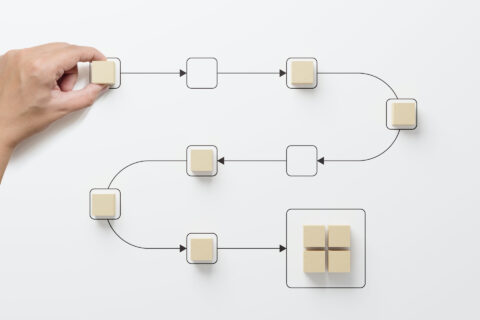It may seem like B2C practices are irrelevant in a B2B manufacturing world. However, manufacturers would be wise to learn from their retail and eCommerce counterparts. Many manufacturers are so focused on production that they treat all customers like another number. They simply worry about getting products out the door, out of sight, and out of mind. So, creating a best-in-class customer experience can be a significant competitive advantage and sometimes is the only true differentiator a manufacturer has.

To help shed some light on the steps—and the extremely damaging mistakes—that can make or break your customer experience, here is a list of five things, with real-life examples, to consider when building your best-in-class manufacturing customer experience.
1. Know your promise and deliver on it every time.
Whether it comes to quality, pricing, or delivery time, your customers expect you to consistently hold to your promises and standards. An organization I know once experienced an ongoing material shortage and could not supply all its customers.
In response, they instituted a daily prioritization meeting between sales, marketing, business leadership, and operations to ensure everyone agreed on who would be supplied and could communicate about the shortage. This, in turn, shifted a negative situation into their competitive advantage because their competitors weren’t strategic about who received the limited supply. It also allowed the organization to supply the most critical and profitable customers and retain that critical business.
2. Quickly communicate if you can’t meet expectations.
No matter how well you plan, issues will arise, and you may not meet customers’ expectations. The more heads-up you give them, the more time they have to plan around the issue rather than react to it. A building materials company did not have a good system for letting homebuilder customers know that their order would not arrive on time, even though they often knew weeks in advance that the product hadn’t even been scheduled for production.
This caused a ripple effect that delayed construction and left it on the builder to reschedule contractors dependent on these materials already being installed – which cost their customers time and money and was a hassle. Had the company let customers know about the delay earlier, they would have had enough time to adjust. Instead, not communicating until the last minute led to significant customer churn.
3. Understand the real customer consequences.
Make time to talk to your customers about why they need the specific timing or quality you’ve promised and what happens if you don’t deliver. In the building products example above, not only did the delayed materials impact the whole production schedule, but it also meant fewer delivered houses, which cost the builders money and impacted the construction managers’ bonus. Another example is a parts manufacturer that failed to deliver essential parts on time and completely shut down their customers’ operations. This resulted in a huge loss of revenue for the customer, who quickly found another supplier.
4. Look to consumer and eCommerce best practices for inspiration.
Everyone can think of their favorite hotel chain, airline rewards program, or even a subscription pet supplies provider that offers consideration practices at every step, making the customer experience very personal.
When you enter the lobby, a welcome message is at the registration desk with your name as an expected guest. When you order consumables, they offer you a subscription to reorder automatically. You get a text confirmation when your order is on its way or delivered. You feel in the loop, and all details are saved in your profile, making it easier for you as a customer to continue doing business with them.
5. Create a truly memorable experience with key moments that matter.
A chemical supplier had been trying to get the attention of a CPG company for a while. The client made the obligatory visit to the supplier’s site but planned to leave that afternoon. The supplier gave a tour of their facility by creating a mini science fair.
They thought about the innovations they’d be trying to create from the prospective client’s point of view and showed them how the supplier’s chemicals could help them do those things. Unbeknownst to them, they had fortunately hit on a specific challenge the client had been trying to solve. Suddenly, the prospective client moved their flights to stay longer and started to share their challenges, and a strong, ongoing relationship was born.
If you find yourself cringing with memories of making mistakes like some of the examples above—or if you simply haven’t given your customer journey much thought—it may be time to stop and strategize how to create an experience that differentiates and matters to customers and prospects alike. Establishing and implementing high standards that are mutually beneficial to all parties will save your organization time, money, and reputation and reduce customer dissatisfaction and churn.
Dawn Werry is a Partner and Chief Marketing Officer with Chief Outsiders, the nation’s largest and fastest-growing firm offering fractional Chief Marketing Officer services with Fortune 500 experience.
© YFS Magazine. All Rights Reserved. Copying prohibited. All material is protected by U.S. and international copyright laws. Unauthorized reproduction or distribution of this material is prohibited. Sharing of this material under Attribution-NonCommercial-NoDerivatives 4.0 International terms, listed here, is permitted.








